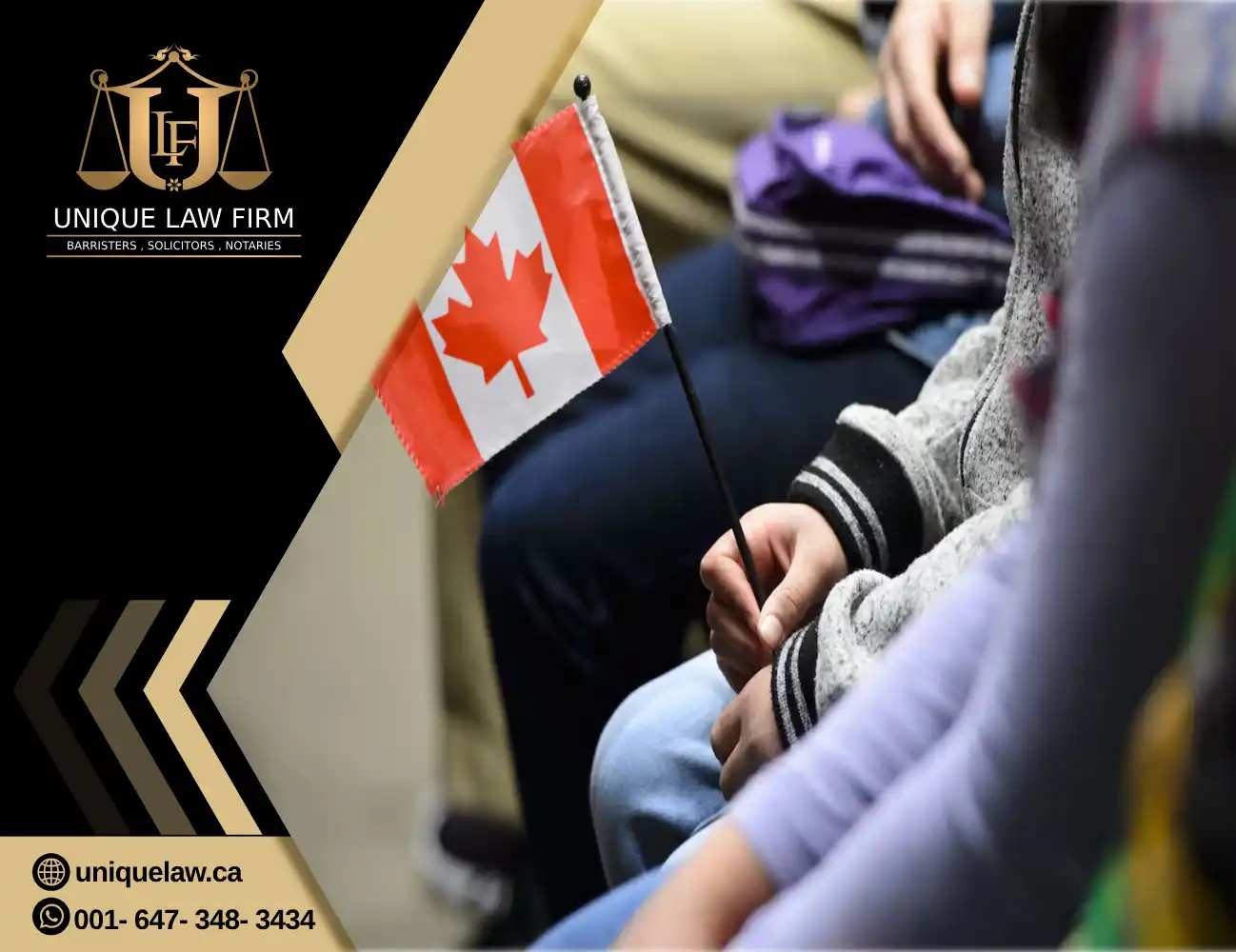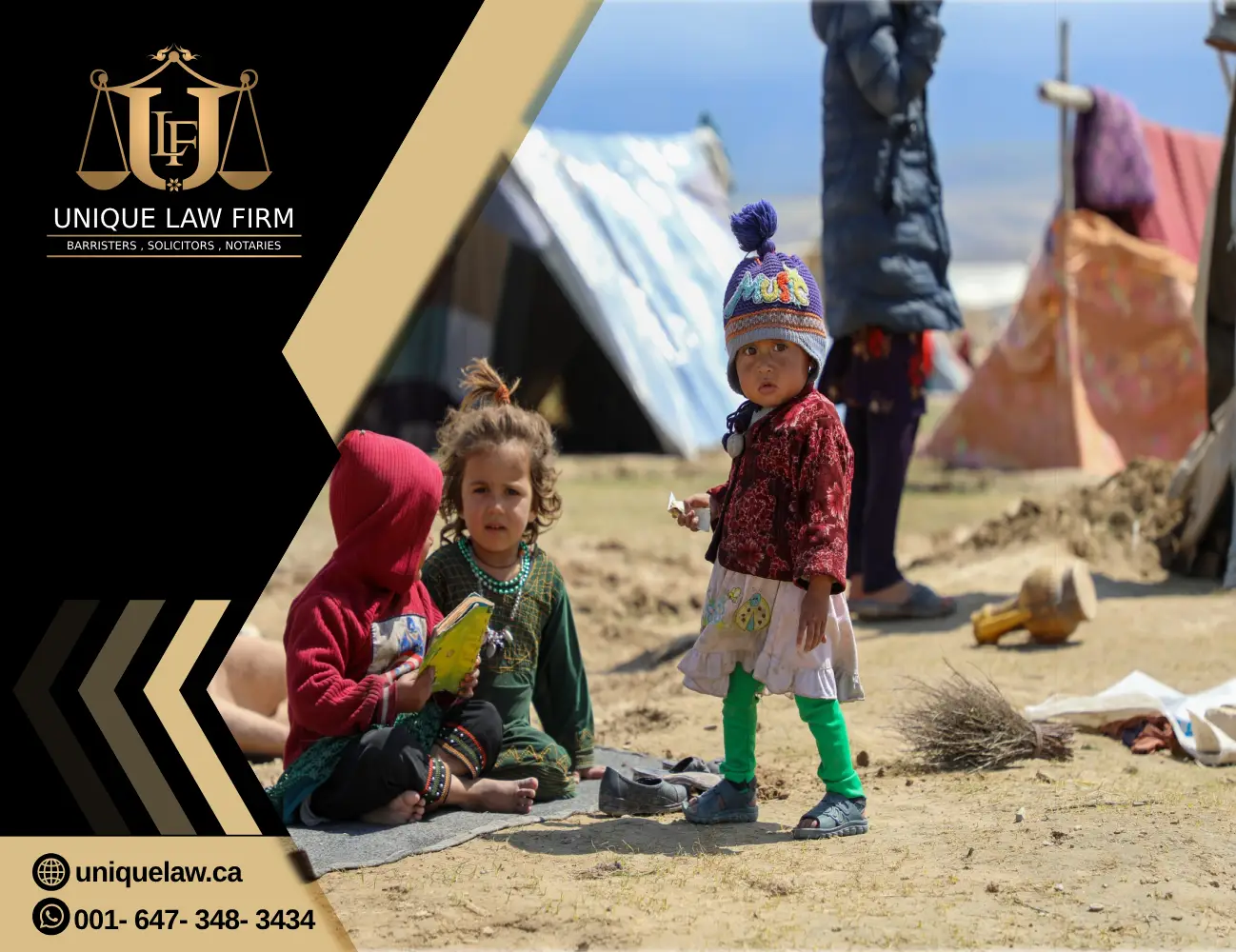Refugee in Canada
Refugees are individuals who have escaped their home countries due to a genuine fear of persecution, rendering them unable to return home. They often endure horrific experiences in their home countries or while fleeing. This situation distinguishes them from immigrants, who voluntarily choose to settle in another country.
Refugee Arrival Process in Canada
Canada’s refugee protection framework is composed of two primary components:
- Refugee and Humanitarian Resettlement Program: For individuals seeking protection from outside Canada.
- In-Canada Asylum Program: For those making refugee claims while already in Canada.

Who is a Refugee?
The United Nations Refugee Agency (UNHCR) defines a refugee as someone who has:
Fled their home country: Due to a well-founded fear of persecution based on race, religion, nationality, political opinion, or membership in a particular social group.
Cannot return home: Because they would face a risk of persecution or serious harm.
Refugee and Humanitarian Resettlement Program.
Upon arriving in Canada, refugees must rebuild their lives, having often spent years in refugee camps. The United Nations Refugee Agency (UNHCR) identifies individuals eligible for resettlement, but applicants cannot apply directly to Canada. Instead, the processing of cases takes time after being identified.
Private sponsors, known as Sponsorship Agreement Holders, play a vital role in resettling refugees. These sponsors, which can be groups or organizations, contribute ongoing support for refugees as part of formal agreements with the Canadian government.
Community-based sponsorship can also occur through Groups of Five and Community Sponsors, which consist of local individuals or groups who come together to assist refugees, usually on a one-time basis.
The **Blended Visa Office-Referred (BVOR) Program** pairs refugees identified by the UNHCR with private sponsors in Canada.
Before resettlement, all cases undergo thorough screening to address any security, criminal, or health-related concerns, and this process is conducted in partnership with security agencies to ensure efficiency.
Refugee and Humanitarian Resettlement Program
Upon arriving in Canada, refugees must rebuild their lives, having often spent years in refugee camps. The United Nations Refugee Agency (UNHCR) identifies individuals eligible for resettlement, but applicants cannot apply directly to Canada. Instead, the processing of cases takes time after being identified. Private sponsors, known as Sponsorship Agreement Holders, play a vital role in resettling refugees. These sponsors, which can be groups or organizations, contribute ongoing support for refugees as part of formal agreements with the Canadian government. Community-based sponsorship can also occur through Groups of Five and Community Sponsors, which consist of local individuals or groups who come together to assist refugees, usually on a one-time basis. The **Blended Visa Office-Referred (BVOR) Program** pairs refugees identified by the UNHCR with private sponsors in Canada. Before resettlement, all cases undergo thorough screening to address any security, criminal, or health-related concerns, and this process is conducted in partnership with security agencies to ensure efficiency.Factors influencing where refugees settle in Canada include:
. Language proficiency
. Proximity to family and friends
. Availability of ethnic, cultural, and religious communities
. Medical needs
. Access to settlement services

Safeguarding Vulnerable Refugee Children
Children traveling without parental care are particularly at risk of abuse and exploitation. To protect these vulnerable individuals, the **Guardianship Protocol** is in place, outlining necessary procedures for officials to follow in such cases.
Applying for Refugee Status in Canada:
Canada has a long history of welcoming refugees and offers several pathways to seek asylum and potentially resettle in the country. Here’s an overview of the process:
Generally, to be eligible to apply for refugee status in Canada, you must:
. Be outside your home country and unable to return due to a well-founded fear of persecution.
. Meet Canada’s definition of a Convention refugee as defined by the UN Refugee Convention.
. Not be inadmissible to Canada on security, criminal, or health grounds.
Two Main Application Streams:
1. Claiming Refugee Status from Abroad:
This process involves applying at a Canadian visa office, resettlement service provider, or the United Nations High Commissioner for Refugees (UNHCR).
You’ll need to provide evidence to support your claim of persecution.
2. Claiming Refugee Status from Within
This option is available if you are already in Canada and meet specific criteria.
You can make a refugee claim at a port of entry (like an airport) or an inland office.
- Security and health checks
- Interviews
- Orientation programs
- Language training (if needed)
Resettlement agencies in Canada provide various support services to help refugees integrate into their new communities, such as:
- Finding housing
- Accessing healthcare and education
- Learning English or French
- Job search assistance
- The refugee resettlement process can be lengthy and complex.
- Seeking legal advice from an immigration lawyer specializing in refugee law is highly recommended.
- There are quotas on the number of refugees Canada accepts each year.
Additional Considerations:
- Private Sponsorship: Canadians can sponsor refugees through a private sponsorship program.
- Government-Assisted Refugees: The Canadian government also works with the UNHCR to resettle refugees.
We hope this information provides a clearer understanding of refugees and the refugee resettlement process in Canada.
Do you need legal assistance?
Contact Us today to enquire about our services or to arrange a conference with our highly qualified Lawyers.



